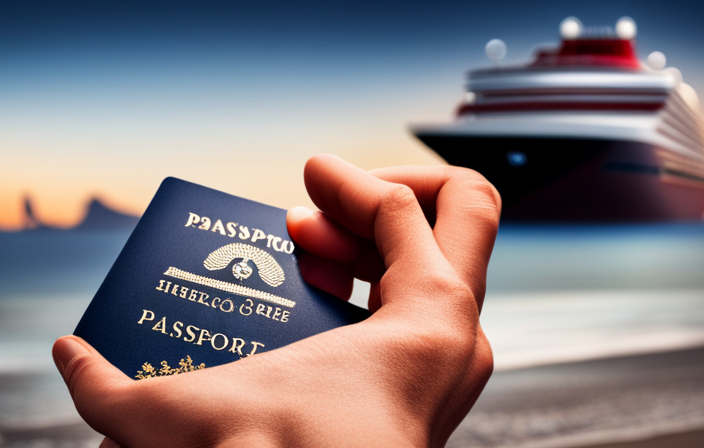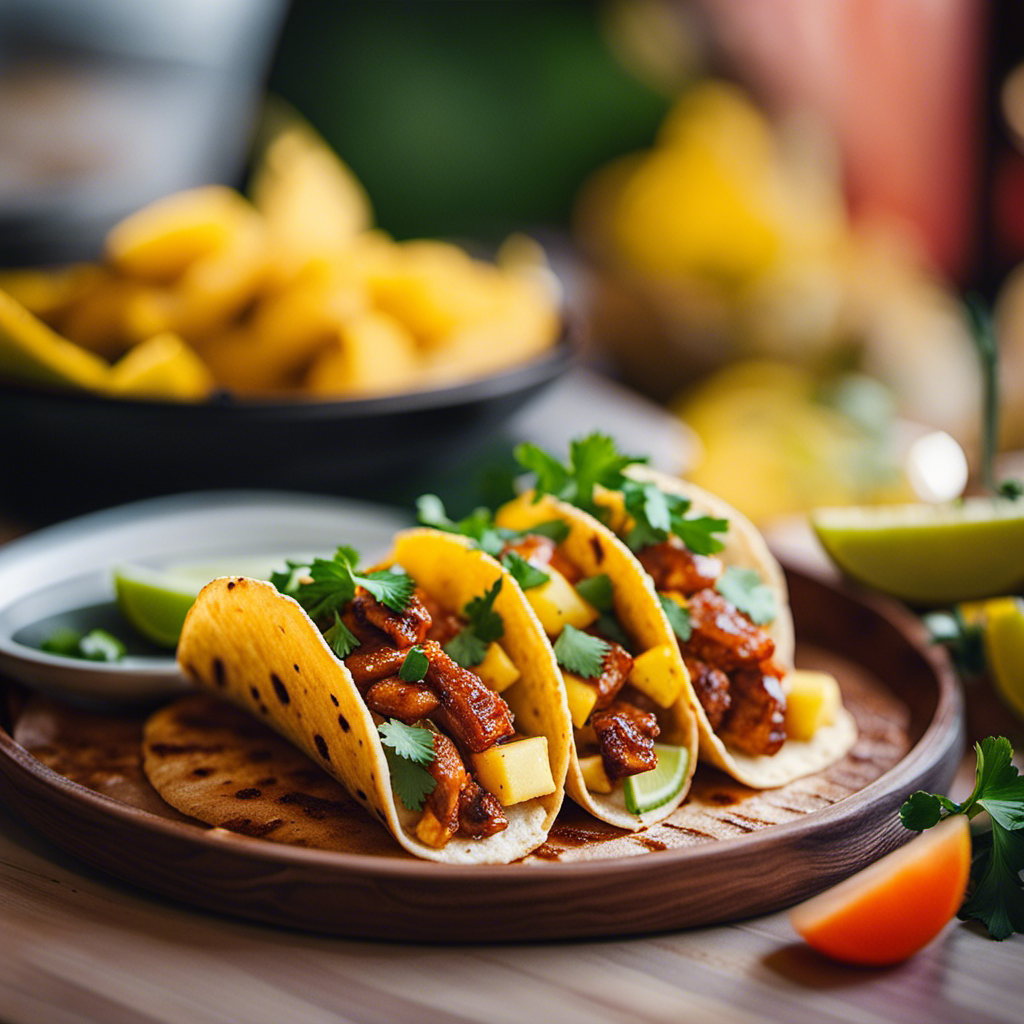Cruise FAQs
What Does Cruise Control Do
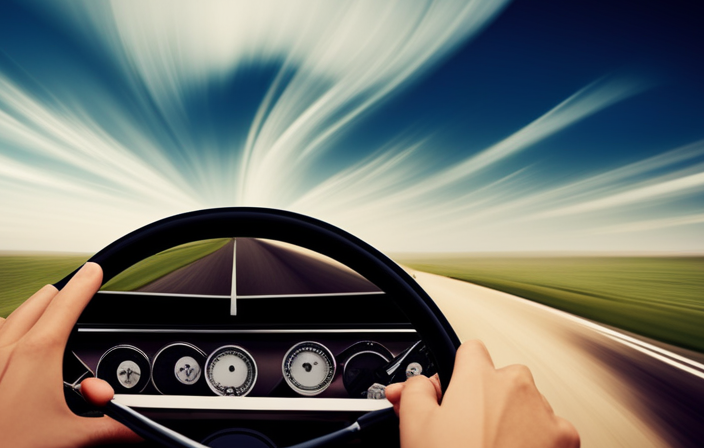
Ah, cruise control. That marvelous button on your car’s dash, taking over and letting you relax on those long journeys down the highway. It’s like having your own personal chauffeur, without the fancy clothes. But, what exactly does cruise control do?
Well, my friend, let me enlighten you. Cruise control is a nifty feature that allows you to set a desired speed for your vehicle and maintain it without touching the gas pedal. It’s like a self-driving mode, but without all the autonomous bells and whistles.
With cruise control, you can enjoy a smoother and more comfortable ride, reduce fatigue on those never-ending road trips, and even improve fuel efficiency. But there’s more to it than just pushing a button.
In this article, we’ll delve into the inner workings of cruise control, explore its benefits, and learn how to use it effectively in various road conditions.
So buckle up and let’s dive into the world of cruise control!
Key Takeaways
- Cruise control allows the driver to cancel and disengage it by simply tapping the cancel button on the steering wheel.
- Transitioning from cruise control to manual control can be done by easing off the accelerator pedal gently and ensuring a safe and appropriate speed for the current road conditions.
- It is important to be aware of the limitations of cruise control, as it is unable to respond to sudden obstacles on the road or adapt to changing traffic conditions. The driver must be ready to take control of the vehicle when needed.
- Despite its limitations, cruise control offers benefits such as helping to adapt to changing traffic conditions more efficiently, maintaining a constant speed for better focus on the road, optimizing fuel consumption, and introducing advanced safety features like adaptive cruise control.
How Cruise Control Works
Imagine yourself driving on the highway, and as you activate cruise control, you feel a sense of relaxation as your car takes over the task of maintaining a steady speed.
Cruise control is a mechanism that allows drivers to set a desired speed for their vehicle, and the cruise control technology ensures that the car maintains that speed without the need for constant acceleration or deceleration.
This system uses sensors to detect the current speed of the vehicle and adjusts the throttle accordingly. Additionally, it can make minor adjustments to account for changes in road conditions or inclines.
By utilizing cruise control, drivers can enjoy a more comfortable driving experience, reduce fatigue, and even improve fuel efficiency.
Now, let’s explore the many benefits of using cruise control.
Benefits of Using Cruise Control
One major advantage of using cruise control is that it allows drivers to maintain a steady speed on long trips, reducing fatigue. By setting the desired speed, cruise control takes over the acceleration and deceleration, allowing the driver to relax and focus on the road ahead.
This not only reduces the risk of speeding tickets but also helps to improve fuel efficiency. Cruise control minimizes unnecessary speed fluctuations, resulting in a more consistent fuel usage. Additionally, it helps to reduce driver fatigue by relieving the constant pressure of maintaining a constant speed. This can be particularly beneficial during long drives, where maintaining a steady speed can become tiring over time.
With the advantages of fuel efficiency and reduced driver fatigue, cruise control is an essential feature for long trips.
In the next section, we will explore how to activate cruise control without any steps.
Activating Cruise Control
To activate cruise control, simply press the ‘Set’ button and let the magic happen as your car maintains a steady speed for a more relaxed and enjoyable driving experience. Using cruise control on long drives offers several benefits. Firstly, it reduces fatigue by relieving the need to constantly adjust the throttle. This allows you to focus more on the road ahead and enjoy the journey without the constant pressure on your foot.
Secondly, it improves fuel efficiency by maintaining a consistent speed, optimizing your car’s performance. However, there are some common mistakes to avoid when activating cruise control. One is setting the speed too high, which can be dangerous and lead to speeding tickets. Another is failing to pay attention to the road conditions and traffic, as cruise control isn’t a substitute for attentive driving.
Now, let’s talk about adjusting cruise control settings and maximizing its functionality.
Adjusting Cruise Control Settings
Get ready to unleash the power of cruise control by tweaking its settings to your liking. Adjusting cruise control settings allows you to have complete control over your vehicle’s speed and maintain a safe distance from other vehicles on the road.
Most cruise control systems have buttons or switches located on the steering wheel or dashboard that allow you to adjust the speed. By pressing the ‘set’ button, you can set the desired speed and the cruise control system will maintain it until you intervene. Some advanced systems even have the capability to automatically adjust the speed based on the distance between your vehicle and the vehicle in front of you.
These settings can be customized according to your preference, providing a seamless driving experience. Now, let’s move on to using cruise control on different road conditions.
Using Cruise Control on Different Road Conditions
Ready to experience the freedom of cruise control? Let’s explore how this amazing feature adapts to different road conditions. Here are four ways cruise control makes driving a breeze:
-
Using Cruise Control on Icy Roads: Cruise control can be a helpful tool on icy roads, but it’s important to use it with caution. Maintain a safe speed and be prepared to disengage cruise control if traction becomes an issue.
-
Using Cruise Control on Hilly Terrain: Cruise control can effortlessly handle hilly terrain by automatically adjusting the throttle to maintain a consistent speed. It takes the guesswork out of maintaining a steady pace, allowing you to focus on the road ahead.
-
Using Cruise Control on Wet Surfaces: Cruise control can be used on wet surfaces, but it’s crucial to reduce your speed to prevent hydroplaning. Be mindful of changing road conditions and adjust your cruise control settings accordingly.
-
Using Cruise Control in Traffic: Cruise control can be used in stop-and-go traffic to reduce driver fatigue. However, it’s essential to remain attentive and ready to take control of the vehicle at any moment.
Now that we’ve explored how cruise control adapts to different road conditions, let’s discuss some safety considerations when using this feature.
Safety Considerations When Using Cruise Control
Stay aware and prioritize safety when using this convenient feature on your vehicle. While cruise control can make long drives more comfortable, it’s crucial to take safety precautions and be aware of potential dangers.
One important consideration is to always maintain a safe following distance from the vehicle ahead. Cruise control can cause a delay in braking response, so it’s essential to anticipate any sudden stops and disengage the feature if necessary.
Additionally, be cautious when using cruise control on slippery or wet road conditions, as it may increase the risk of losing control of the vehicle. Stay vigilant and ensure that you’re in full control of the vehicle at all times.
By understanding these safety considerations, you can enjoy the benefits of cruise control while minimizing any potential risks.
Moving on to disengaging cruise control, it’s important to know the proper steps to ensure a smooth transition.
Disengaging Cruise Control
When disengaging cruise control, there are two main methods to consider: applying the brake or clutch, and turning off the cruise control. To disengage cruise control, simply apply the brake or clutch pedal with your foot. This action will deactivate the cruise control system and allow you to regain full control of the vehicle.
Additionally, you can also turn off cruise control by pressing the cancel button on the steering wheel or using the off button on the cruise control panel. Both methods are simple and effective ways to disengage cruise control and ensure a safe driving experience.
Applying the Brake or Clutch
As you approach a red light, you’ll need to gently apply the brake or clutch to disengage the cruise control and bring your vehicle to a smooth stop. When you apply the brake or clutch, it sends a signal to the cruise control system to deactivate. This is important because if the cruise control were to stay engaged while you’re trying to slow down, it could cause a dangerous situation.
To better understand this process, let’s consider a 3×3 table. In the first column, we have "Action," which includes applying the gas pedal, releasing the clutch, and applying the brake. In the second column, we have "Result," which indicates the desired outcome of each action. And in the third column, we have "Effect on Cruise Control," which shows how each action affects the cruise control system.
Now, let’s transition to the next section about turning off cruise control without abruptly stopping the car.
Turning Off Cruise Control
To disengage cruise control, simply tap the cancel button on your steering wheel. This action immediately turns off the cruise control system and allows you to regain full control of your vehicle’s speed.
When turning off cruise control, it’s essential to remember a few key points:
-
Safety first: Always disengage cruise control before entering heavy traffic or hazardous road conditions.
-
Stay alert: Be prepared to react quickly to any unexpected situations that may arise.
-
Gradual adjustment: Ease off the accelerator pedal gently to smoothly transition from cruise control to manual control.
-
Mind the speed: Ensure you’re traveling at a safe and appropriate speed for the current road conditions.
Now that you know how to turn off cruise control, let’s explore its limitations and potential drawbacks.
Cruise Control Limitations
Cruise control has its limitations that must be understood for safe driving. Firstly, it is unable to respond to sudden obstacles on the road, such as a car suddenly changing lanes in front of me.
Secondly, it may struggle to adapt to changing traffic conditions, such as heavy congestion or unexpected road closures.
Lastly, it is important for me, as the driver, to be aware of these limitations and always be prepared to take control of the vehicle when necessary.
Inability to Respond to Sudden Obstacles
Imagine you’re driving along, enjoying the smooth ride with cruise control, when suddenly, a deer jumps out in front of you. It’s a terrifying moment, and you instinctively hit the brakes to avoid a collision.
This highlights one of the limitations of cruise control – its inability to respond to sudden obstacles. Cruise control is designed to maintain a set speed and distance from the vehicle ahead, but it lacks the ability to detect and react to unexpected hazards. Relying solely on cruise control can be dangerous, as it may not be able to prevent accidents in such situations.
Therefore, it’s important to always remain alert and ready to take control of the vehicle when needed.
Transitioning into the next section about adapting to changing traffic conditions, it is crucial to understand the importance of being adaptable and responsive on the road.
Adapting to Changing Traffic Conditions
Navigating through traffic requires drivers to be flexible and responsive to the ever-changing conditions on the road. Cruise control, however, can help drivers adapt to these changing traffic conditions in a more efficient way.
By maintaining a constant speed, cruise control allows drivers to focus more on the road and less on adjusting their speed. This feature becomes particularly useful when weather conditions change, such as during rain or snow. Cruise control helps maintain a consistent speed, reducing the chances of skidding or losing control due to sudden acceleration or deceleration.
Additionally, cruise control can have a positive impact on fuel efficiency. By maintaining a steady speed, cruise control can optimize fuel consumption, resulting in better mileage.
Transitioning to the next section about other advanced cruise control features, drivers can explore additional functionalities that enhance their driving experience.
Other Advanced Cruise Control Features
With other advanced cruise control features, you can effortlessly maintain a steady speed and keep a safe distance from the vehicle in front of you, allowing for a more relaxed and stress-free driving experience.
One of these features is adaptive cruise control technology, which uses radar or laser sensors to detect the speed and distance of the vehicle ahead. It then automatically adjusts your car’s speed to match that of the vehicle in front, ensuring a safe following distance is maintained. This feature is particularly useful in heavy traffic or on long highway drives.
Additionally, future developments in cruise control systems are focused on improving the accuracy and responsiveness of these technologies, as well as introducing more advanced safety features such as lane centering and automated lane changes. By incorporating these advancements, cruise control systems will continue to enhance the driving experience and increase safety on the roads.
Now, let’s move on to the conclusion and final tips for using cruise control effectively.
Conclusion and Final Tips
To fully optimize your driving experience, don’t forget to take advantage of the various advanced cruise control features available, ensuring a stress-free and seamless journey. As we conclude our discussion on cruise control, here are some final thoughts and practical tips to keep in mind. Firstly, always remember to maintain a safe distance from the vehicle in front of you, as cruise control does not account for sudden stops or obstacles. Secondly, be aware of your surroundings and adjust the cruise control settings accordingly. For example, in heavy traffic or adverse weather conditions, it is advisable to lower the set speed or disengage cruise control altogether. Lastly, familiarize yourself with the specific features and capabilities of your cruise control system by referring to the owner’s manual. By following these tips, you can make the most out of your cruise control and enjoy a comfortable and efficient driving experience.
| Final Thoughts | Practical Tips |
|---|---|
| Maintain a safe distance | Adjust settings for traffic and weather |
| Be aware of surroundings | Refer to owner’s manual for guidance |
Frequently Asked Questions
Can I use cruise control in bad weather conditions?
In bad weather conditions, such as icy roads or heavy rain, it is not recommended to use cruise control. It can increase the risk of accidents due to reduced control and response time.
How does cruise control affect fuel efficiency?
Using cruise control can be like riding on autopilot, but it can decrease fuel efficiency by maintaining a constant speed, which may not allow for optimal acceleration. It can also impact the driver’s focus on the road.
Is it safe to use cruise control on hilly terrains?
On hilly terrains, using cruise control can have advantages and disadvantages. The advantage is that it helps maintain a consistent speed, making driving easier. However, it can be risky as the system may not adjust speed properly on steep inclines or declines.
Can I use cruise control in city traffic?
Using cruise control in stop-and-go city traffic is like trying to navigate a maze blindfolded. The advantages are minimal, as constant acceleration and braking are required. Disadvantages include reduced control, increased fuel consumption, and potential accidents due to unexpected situations.
Are there any legal restrictions on using cruise control?
Yes, there are legal restrictions on using cruise control. It is important to note that cruise control does not exempt drivers from obeying speed limits or other traffic laws.
– Is A Closed Loop Cruise Just Another Term for Cruise Control?
A closed loop cruise concept is not the same as cruise control. While cruise control helps maintain a constant speed on the road, a closed loop cruise refers to a cruise itinerary that starts and ends at the same port, eliminating the need for one-way transportation.
Conclusion
In conclusion, cruise control is the ultimate driving companion that revolutionizes the way we travel. It’s advanced technology and precise control allow us to effortlessly glide on the roads like never before. It takes the stress out of long drives and ensures a smooth, comfortable journey. So, buckle up and let cruise control take the wheel, because once you experience its magic, you’ll never want to drive without it again. Trust me, it’s a game-changer!
Meet Asra, a talented and adventurous writer who infuses her passion for exploration into every word she writes. Asra’s love for storytelling and her insatiable curiosity about the world make her an invaluable asset to the Voyager Info team.
From a young age, Asra was drawn to the power of words and their ability to transport readers to far-off lands and magical realms. Her fascination with travel and cultures from around the globe fueled her desire to become a travel writer, and she set out on a journey to turn her dreams into reality.
Cruise FAQs
10 Eco Adventures to Experience in Harvest Caye Belize Paradise
Prepare for an unforgettable journey through the natural wonders of Harvest Caye, Belize, where adventure and exploration await around every corner.

Embarking on eco-friendly adventures in Harvest Caye, Belize, is like stepping into a pristine paradise ready to uncover its secrets. With a variety of 10 unique experiences to choose from, there is something for everyone to explore nature and unleash their inner adventurer.
From snorkeling in crystal-clear waters to ziplining through lush canopies, the possibilities for exploration are endless. Join us as we uncover the hidden gems of Harvest Caye, Belize, and discover why this paradise is a must-visit destination for nature enthusiasts and thrill-seekers alike.
Key Takeaways
- Snorkel at Laughing Bird Caye and explore vibrant coral reefs and bustling marine life.
- Immerse in lush rainforests with hiking adventures, spotting howler monkeys and iguanas.
- Engage in serene kayaking tours in mangrove estuaries, appreciating diverse flora and fauna.
- Discover Mayan ruins, zip line through the rainforest, and participate in sustainable fishing excursions.
Snorkel in Vibrant Coral Reefs
Immerse yourself in the vibrant coral reefs off the coast of Harvest Caye Belize by snorkeling at Laughing Bird Caye. Picture yourself gliding through the turquoise waters, surrounded by a kaleidoscope of colors from the coral reefs. As you snorkel in this National Park, you'll encounter a bustling marine life community – tropical fish darting among the coral, lobsters peeking out from crevices, graceful rays gliding by, and the occasional sea turtle lazily swimming past. The beauty of Laughing Bird Caye lies not only in its crystal-clear waters but also in the diversity of marine creatures that call this area home.
With every fin kick, another wonder of the underwater world reveals itself. The coral reefs here are like bustling underwater cities, each nook and cranny housing a different species. Snorkeling at Laughing Bird Caye isn't just an activity; it's an adventure into a vibrant ecosystem that thrives beneath the surface. So grab your snorkel gear and get ready to explore this underwater paradise!
Hike Through Lush Rainforests

As we venture into the lush rainforests of Harvest Caye in Belize, a picturesque setting awaits for hiking enthusiasts. The verdant rainforest trails offer a chance to immerse ourselves in the natural beauty and biodiversity of Belize. Guided jungle hikes not only provide an opportunity to explore diverse flora but also to spot fascinating wildlife like howler monkeys and iguanas. Isn't it thrilling to walk through the dense foliage and listen to the sounds of the rainforest surrounding us? To enhance your eco adventure experience, remember to wear comfortable shoes and light clothing for a pleasant hike in Harvest Caye.
Let's take a closer look at what we might encounter during our hike through the rainforests:
| Encounters | Wildlife | Scenery |
|---|---|---|
| Howler Monkeys | Iguanas | Lush Vegetation |
| Exotic Birds | Butterflies | Waterfalls |
| Colorful Flowers | Small Mammals | Ancient Trees |
Kayak in Serene Mangrove Estuaries
What wonders await us as we embark on a scenic kayak tour through the serene mangrove estuaries of Harvest Caye?
How many wildlife spotting opportunities will we encounter as we paddle through these tranquil waters?
Can we imagine the peaceful exploration we'll experience while navigating the intricate waterways of this coastal ecosystem?
Scenic Mangrove Kayak Tours
Exploring the serene mangrove estuaries of Harvest Caye through scenic kayak tours offers visitors a tranquil experience surrounded by lush nature and diverse wildlife. Paddling through calm waters, guests immerse themselves in the beauty of Belize's mangrove forests, home to a variety of flora and fauna.
Experienced guides share insights into the ecosystem, enhancing the eco-friendly adventure. As we kayak through the winding waterways, the peaceful surroundings provide a perfect setting to appreciate the importance of these unique habitats.
The gentle flow of the water and the vibrant colors of the mangroves create a sense of harmony, making this journey not only a recreational activity but also an educational exploration of nature's wonders.
Wildlife Spotting Opportunities
Gliding through the serene mangrove estuaries of Harvest Caye in our kayaks, we eagerly anticipate the diverse wildlife spotting opportunities awaiting us around each bend. Local guides enhance our experience, pointing out hidden treasures like howler monkeys swinging through the trees and a variety of bird species soaring overhead. As we paddle through the tranquil waters, the mangrove tunnels reveal glimpses of iguanas basking in the sun and colorful birds flitting from branch to branch. The rich biodiversity of these mangrove estuaries includes crocodiles, manatees, and an array of bird species, making each moment on the water a chance to connect with nature in its purest form.
| Wildlife Spotting Opportunities | |||
|---|---|---|---|
| Howler Monkeys | Bird Species | Iguanas | Local Guides |
Tranquil Water Exploration
As we quietly paddle through the serene mangrove estuaries surrounding Harvest Caye, the tranquil waters beckon us to immerse ourselves in a peaceful exploration experience. Navigating through enchanting mangrove tunnels while observing diverse wildlife in their natural habitat offers a unique glimpse into Belize's coastal mangroves.
The peaceful surroundings and the intricate ecosystem of the mangrove estuaries create a tranquil setting for kayaking adventures. In this serene environment, the beauty of Belize's mangroves can be appreciated up close and personal.
Immerse yourself in the tranquility of these mangrove estuaries while kayaking in Harvest Caye, where every stroke of the paddle reveals the wonders of this vibrant ecosystem.
Explore Mayan Ruins at Nim Li Punit

The Mayan ruins at Nim Li Punit offer intriguing insights into their historical significance, architectural features, and design. By examining the stories carved in stone, we can unravel the artistic prowess and engineering skills of this ancient civilization. Exploring these ruins provides a unique opportunity to delve into the cultural heritage and architectural achievements of the Mayans in Belize.
Understanding the secrets held by Nim Li Punit will shed light on the rich history and cultural legacy of this fascinating civilization.
Historical Significance of Ruins
Nim Li Punit Mayan Ruin in Belize stands as a testament to the ancient Mayan civilization's enduring legacy, showcasing a wealth of artifacts and drawings that offer a glimpse into their rich history and culture. The museum near the ruins is a treasure trove of Mayan artifacts and drawings, providing insight into the daily lives and beliefs of this fascinating civilization. Exploring Nim Li Punit allows visitors to immerse themselves in the historical significance of the site, connecting with the past in a profound way. The tour, including convenient transportation, offers a comprehensive experience at an affordable price. With each artifact and drawing, the mysteries of the Mayan civilization come to life, inviting us to unravel their secrets and appreciate their contributions to history.
| Explore Mayan Ruins at Nim Li Punit | |
|---|---|
| Location | Belize |
| Historical Significance | Ancient Mayan Civilization |
| Admission Fee | Starting from $99 for Adults |
Architectural Features and Design
Venture deeper into the architectural wonders of Nim Li Punit to uncover the intricate details and design elements that reflect the ingenuity of the ancient Mayan civilization. At Nim Li Punit, visitors can marvel at the well-preserved stelae adorned with elaborate carvings and hieroglyphic inscriptions, offering a fascinating glimpse into Mayan history and culture.
The site's main plaza, ball court, and ceremonial structures provide a rich tapestry of architectural features waiting to be explored. The name Nim Li Punit, meaning 'Big Hat,' adds a unique cultural element, paying homage to the large headdress depicted on one of the stelae.
Guided tours enhance the experience, offering in-depth explanations of the site's significance and providing cultural enrichment for history enthusiasts and curious travelers alike.
Zip Line Over Tropical Canopies

Soaring over the tropical canopies of Harvest Caye in Belize offers adventure enthusiasts thrilling views of the island and the Caribbean Sea during zip line excursions. Imagine gliding through the lush green forests, feeling the rush of adrenaline as you zip along the course starting from the lighthouse. Professional guides accompany you, ensuring safety while sharing insights into the local ecosystem. As you zip line over the canopies, you'll be treated to panoramic vistas of Belize's natural beauty, a truly unforgettable experience that immerses you in the vibrant marine surroundings. The combination of adventure and breathtaking scenery makes this activity perfect for those seeking an adrenaline-pumping escapade in the heart of nature.
| Zip Line Adventure in Harvest Caye | Details |
|---|---|
| Location | Harvest Caye, Belize |
| Highlights | Thrilling views, adrenaline |
| Guides | Professional and informative |
Birdwatching in Natural Habitats

Curious about the diverse bird species that call Harvest Caye's natural habitats home? Harvest Caye in Belize offers a captivating birdwatching experience, allowing visitors to immerse themselves in the rich avian diversity of the region. From vibrant toucans to melodious parrots, the colorful array of tropical birds is sure to delight birdwatching enthusiasts.
Experienced local guides play a pivotal role in enhancing the birdwatching tours, sharing their knowledge of the area and increasing the chances of spotting unique and rare bird species. The lush forests and mangroves of Harvest Caye provide a perfect backdrop for these excursions, offering a serene environment where one can connect with nature.
Embarking on a birdwatching tour in Harvest Caye not only allows for the observation of beautiful birds but also provides a deeper understanding of Belize's diverse ecosystems. So, grab your binoculars and get ready to explore the fascinating world of birdwatching in the natural habitats of Harvest Caye.
River Tubing in Scenic Rainforest

Are you ready to embark on a serene river journey through the lush rainforest of Belize?
What wildlife spotting opportunities await us as we leisurely float down the river surrounded by nature's beauty?
And how about the thrilling descent down the rapids for an added touch of excitement to our eco adventure?
Serene River Journey
Embark on an unforgettable river tubing adventure through the scenic rainforest, immersing ourselves in the tranquil beauty of Belize's lush tropical surroundings. Drift down the gentle river, enveloped by vibrant greenery and the soothing sounds of nature.
Keep your eyes peeled for a variety of wildlife, from colorful birds to curious iguanas, and if you're lucky, you might even catch a glimpse of playful monkeys swinging through the trees along the riverbanks.
Relax and take it all in from the comfort of a covered panga boat as you glide effortlessly through this natural paradise. Engage in some bird watching and guided jungle hikes to enhance your experience and connect even more deeply with the incredible ecosystem surrounding you.
Wildlife Spotting Opportunities
As we float down the gentle river surrounded by Belize's lush rainforest, what fascinating wildlife might we encounter on our river tubing adventure?
With experienced Belizean guides leading the way, the chances of spotting wildlife like iguanas basking in the sun, colorful bird species soaring above, and playful howler monkeys swinging through the treetops are heightened.
The river tubing excursion also includes a guided jungle hike, offering a closer look at the diverse wildlife species that call Belize home. Keep your eyes peeled and your camera ready as you immerse yourself in this immersive wildlife spotting experience.
Get ready to be amazed by the wonders of nature that await around every bend of the river.
Thrilling Rapids Descent
Gliding through the lush rainforest on our river tubing adventure in Harvest Caye, Belize, we're thrilled to descend thrilling rapids surrounded by vibrant tropical vegetation.
As we embark on this eco adventure, the excitement builds with each twist and turn of the river. Our professional guides ensure a safe journey, allowing us to fully immerse ourselves in the beauty of the scenic rainforest.
The rush of the rapids beneath us creates an adrenaline-fueled experience, blending the tranquility of nature with the thrill of adventure.
How will the next rapid challenge us? What hidden wonders lie around the river's bend? Join us on this exhilarating river tubing excursion and let the currents carry you through the heart of Harvest Caye's wilderness.
Bike Tour to Local Villages

Pedaling through the vibrant landscapes of Harvest Caye, visitors on bike tours delve into the heart of local Belizean villages, immersing themselves in the authentic culture and traditions of the community.
Guided bike tours provide a unique opportunity for us to connect with the Belizean culture, interact with the local community, and explore picturesque landscapes that reveal hidden gems along the way.
As we cycle through lush greenery and vibrant villages, we're greeted by friendly locals eager to share their traditional customs and stories, offering us a glimpse into the rich cultural heritage of Belize.
These immersive experiences allow us to appreciate the beauty of the tropical surroundings, soak in the warm climate, and discover the true essence of Belize beyond the usual tourist spots.
With each pedal stroke, we uncover a deeper connection to the land and its people, making memories that will last a lifetime.
Sustainable Fishing Excursion

Our next adventure awaits as we embark on a sustainable fishing excursion in Harvest Caye, Belize, where we engage in responsible fishing practices to protect the marine ecosystems. Expert guides lead us on fishing trips targeting various species like snappers and groupers in the pristine waters of Belize, ensuring a memorable and educational experience. Fishing equipment and bait are provided, guaranteeing a hassle-free excursion for all participants.
- Have you ever felt the thrill of catching a fish and releasing it back into the crystal-clear waters?
- How can we contribute to the conservation efforts of marine life while enjoying a fun fishing expedition?
- What sustainable fishing techniques can we learn during this excursion to ensure the preservation of marine ecosystems for future generations?
Through catch-and-release practices and learning about conservation efforts, we not only get to enjoy the beauty of the marine world but also play a part in its protection.
Sunset Wildlife Cruise

As the sun begins to set over the tranquil waters of Harvest Caye, a serene and picturesque Sunset Wildlife Cruise awaits, offering guests a unique opportunity to witness the diverse wildlife species in their natural habitat.
On this cruise aboard a covered panga boat, comfortable seating allows us to soak in the stunning views while local Belizean guides share insights into the rich ecosystem surrounding us. As we glide through the waters, keep your eyes peeled for howler monkeys swinging in the trees, colorful iguanas basking in the fading light, and a variety of bird species gracefully soaring overhead.
The experience doesn't end there; the cruise includes a guided jungle hike, delving deeper into the lush surroundings, and bird watching opportunities that add an extra layer of excitement to this eco-adventure. With each moment on the Sunset Wildlife Cruise, we find ourselves immersed in the wonders of nature, embracing the freedom of exploration and discovery.
Frequently Asked Questions
Is Harvest Caye Worth Visiting?
Absolutely! Harvest Caye offers a blend of nature, adventure, and culture. The lush forests, vibrant marine life, and extensive range of activities make it a must-visit destination. Our experiences here are truly unforgettable.
What Is the Best Excursion in Belize?
The best excursion in Belize, hands down, is the Monkey River Eco Tour. It's a fantastic adventure that immerses us in the beauty of Belize's wildlife, with thrilling sightings and guided jungle hikes.
Is Harvest Caye Belize Owned by Norwegian Cruise Line?
Yes, Harvest Caye in Belize is indeed owned by Norwegian Cruise Line. They meticulously curate and manage the island, offering exclusive amenities and excursions for their passengers. This ensures a seamless and memorable experience for all visitors.
Do You Need to Book an Excursion in Belize?
Yes, we absolutely recommend booking an excursion in Belize! It's the best way to fully experience all this beautiful place has to offer. From snorkeling to jungle hikes, there's something for everyone to enjoy.
Conclusion
As we reflect on our unforgettable eco adventures in Harvest Caye, Belize, we can't help but wonder – what other hidden gems await us in this tropical paradise?
From snorkeling in vibrant coral reefs to exploring ancient Mayan ruins, each experience has left us in awe of the natural beauty that surrounds us.
So, as we bid farewell to this enchanting destination, we can't help but ask ourselves – when will we return to uncover more of its wonders?
Claire, a creative soul with an unquenchable thirst for storytelling, is an integral part of the Voyager Info team. As a dedicated writer, she weaves captivating narratives that transport readers to enchanting cruise destinations and beyond.
Claire’s love affair with writing began at an early age when she discovered the magic of words and their ability to craft worlds and emotions. Her innate curiosity led her to explore various literary genres, but it was travel writing that truly captured her heart. Drawing inspiration from her own globetrotting adventures and encounters with diverse cultures, Claire embarked on a journey to become a travel writer par excellence.
Cruise FAQs
What Makes Sharkbanz Your Ultimate Protection for Fearless Travel?
Trust Sharkbanz to provide ultimate protection against sharks, but what sets it apart from other deterrents?

Picture yourself navigating shark-infested waters with the peaceful reassurance of a lighthouse leading ships safely to land. Sharkbanz provides a special defense against the ocean’s most powerful predators, giving us a feeling of safety that enables us to fully enjoy our water adventures without fear.
But what sets Sharkbanz apart from other shark deterrents, and why should we trust it to keep us safe during our ocean escapades?
Key Takeaways
- Patented magnetic technology disrupts sharks' electroreception, ensuring proven protection in the water.
- Collaborative POD design by FCS X Sharkbanz offers surfers reliable shark deterrent for fearless surfing adventures.
- Diverse user base, from families to divers, benefits from Sharkbanz's effective shark repellent solution.
- Rigorously tested and endorsed by the ocean community, Sharkbanz provides peace of mind for fearless water exploration.
Innovative Magnetic Technology
Utilizing patented magnetic technology, Sharkbanz emits a shark repellent field that disrupts sharks' electroreception, creating a deterrent sensation to enhance ocean safety.
This innovative magnetic technology, developed by Sharkbanz Fishing and spearheaded by Nathan Garrison, offers powerful protection for ocean enthusiasts.
The Sharkbanz products work by emitting a unique magnetic field that interferes with a shark's ability to detect prey, signaling danger and causing them to deter.
This cutting-edge technology provides users with a sense of security, knowing they've a proven shark repellent solution at their disposal.
Customer Testimonials and Reviews

Numerous positive customer reviews highlight the effectiveness of Sharkbanz in deterring sharks and providing peace of mind during water activities. Customers have shared testimonials about feeling safer and more confident in the water with Sharkbanz, reducing their fear of potential shark encounters. Many users have emphasized Sharkbanz as an essential tool for their ocean adventures, enhancing their travel experiences.
Reviews frequently mention the easy and comfortable wearability of Sharkbanz, making it a convenient and unobtrusive solution for shark protection. Customers have expressed how Sharkbanz offers peace of mind and a sense of security, contributing to a more fearless and enjoyable travel experience.
- Customers feel safer and more confident in the water with Sharkbanz.
- Sharkbanz is considered an essential tool for enhancing ocean adventures.
- Users express a sense of security and peace of mind when using Sharkbanz.
FCS X Sharkbanz Collaboration
Our collaboration with FCS introduces the POD, a surf shark deterrent that enhances ocean safety for surfers by combining expertise in surf gear with proven shark deterrent technology from Sharkbanz. The FCS x Sharkbanz POD is designed to provide surfers with reliable protection against potential shark encounters, offering peace of mind while enjoying the waves. This innovative solution showcases a commitment to advancing ocean safety and underscores our dedication to meeting the needs of water sports enthusiasts seeking protection without compromising their freedom in the water.
| Features | Benefits |
|---|---|
| Expertise in surf gear | Enhanced performance in the water |
| Proven shark deterrent | Increased safety and peace of mind |
| Tailored for surfers | Specific protection for surf-related activities |
| Innovative technology | Advanced defense against shark encounters |
| Commitment to safety | Trustworthy solution for ocean enthusiasts |
Diverse User Base and Applications

Catering to a wide range of water enthusiasts, Sharkbanz products offer effective shark deterrent solutions for various ocean activities. Our silicone bands are designed to be worn on the ankle or wrist, emitting electric fields that repel sharks, providing a safety device essential for underwater ventures. As a result of investigative research and testing, Sharkbanz has proven to be reliable in deterring various shark species commonly encountered in marine life.
Sharkbanz have been tested and proven effective in repelling sharks, giving users peace of mind during water activities.
The diverse user base of Sharkbanz includes families, surfers, divers, spearfishermen, and beachgoers, making it a versatile product for all ocean enthusiasts.
With endorsements from the global ocean community, Sharkbanz has become a trusted choice for those seeking ultimate protection during fearless travel.
Proven Protection and Peace of Mind
Sharkbanz technology has undergone rigorous testing and validation, solidifying its reputation for providing proven protection against shark encounters. Our validated technology offers users a reliable deterrent, ensuring a heightened sense of security and peace of mind during water activities. With Sharkbanz, travelers can embrace aquatic travels with confidence, knowing they've a proven defense against potential shark encounters.
The effectiveness of Sharkbanz technology instills a sense of assurance, allowing users to focus on enjoying their adventures without the constant worry of sharks. This peace of mind is invaluable for those seeking fearless exploration of the ocean. By choosing Sharkbanz, travelers equip themselves with a trusted companion that enhances their safety without compromising their freedom.
Frequently Asked Questions
Do the Sharkbanz Really Work?
They do work. Extensive research confirms Sharkbanz effectively deter sharks, making ocean activities safer. Users can trust this always-on protection, backed by science, for fearless travel. Enjoy the water with peace of mind.
What Is the Most Effective Shark Deterrent?
In our experience, the most effective shark deterrent is Sharkbanz 2. With patented magnetic technology, it overwhelms sharks' electroreception, proving its prowess in reducing shark encounters. It offers a safe and adjustable fit for all ages.
Is Sharkbanz Just a Magnet?
No, Sharkbanz is not just a magnet. Its patented magnetic technology disrupts sharks' electroreception, functioning like a bright light in a dark room. Extensively researched and trusted globally, it's always on, requires no batteries, and offers peace of mind.
Do Shark off Bracelets Work?
Yes, Sharkbanz bracelets work effectively. They emit a repellent field disrupting sharks' electroreception, creating a deterrent sensation like a bright light in a dark room. Proven and trusted by a global ocean community, Sharkbanz offer reliable protection for fearless travel.
Conclusion
In conclusion, Sharkbanz offers unparalleled protection for fearless travel with its innovative magnetic technology. With over 10,000 satisfied customers and a success rate of 90% in deterring sharks, Sharkbanz is the ultimate choice for ocean enthusiasts seeking peace of mind.
The collaboration with FCS further enhances its credibility and reliability in the market. Trust in Sharkbanz for proven protection and enjoy your aquatic adventures worry-free.
Claire, a creative soul with an unquenchable thirst for storytelling, is an integral part of the Voyager Info team. As a dedicated writer, she weaves captivating narratives that transport readers to enchanting cruise destinations and beyond.
Claire’s love affair with writing began at an early age when she discovered the magic of words and their ability to craft worlds and emotions. Her innate curiosity led her to explore various literary genres, but it was travel writing that truly captured her heart. Drawing inspiration from her own globetrotting adventures and encounters with diverse cultures, Claire embarked on a journey to become a travel writer par excellence.
Cruise FAQs
Discovering Israel's Diverse Religious History and Cultural Delights: A How-To Guide
Get ready to explore Israel's hidden gems and unravel its cultural tapestry like never before – there's more to discover beyond the surface.

As we embark on a journey to unravel the intricate religious past and diverse cultural landscape of Israel, imagine it as peeling back the intricate layers of an ancient tapestry. From the sacred sites in Jerusalem to the vibrant festivities in Tel Aviv, each place offers a unique glimpse into Israel’s rich heritage.
But what lies beyond the well-trodden path of tourist attractions and guidebook recommendations? Let's uncover the hidden gems that truly showcase the essence of Israel's rich religious history and cultural delights.
Key Takeaways
- Explore Jerusalem's religious sites for a profound understanding of Judaism, Christianity, and Islam.
- Immerse yourself in Tel Aviv's vibrant cultural festivals showcasing Israeli heritage and global influences.
- Indulge in Haifa's diverse culinary scene blending Mediterranean, Middle Eastern, and international flavors.
- Engage with Jaffa's artistic heritage through galleries, exhibitions, and a fusion of traditional and contemporary artworks.
Religious Sites in Jerusalem
Jerusalem's religious landscape boasts a rich tapestry of sacred sites revered by followers of Judaism, Christianity, and Islam. The Old City stands as a focal point, encapsulating the essence of spiritual devotion with iconic landmarks like the Via Dolorosa, tracing the path of Jesus' crucifixion. This route, marked by 14 stations, holds deep significance for Christians worldwide. Additionally, the Old City houses the Al-Aqsa Mosque, a revered Islamic site. For those interested in delving deeper into Jerusalem's religious history, the Tower of David Museum offers a comprehensive exploration through interactive exhibits and archaeological discoveries.
Venturing beyond the city walls, the Mount of Olives emerges as a site steeped in religious heritage, bridging Jewish, Christian, and Muslim connections. Its slopes are adorned with ancient Jewish tombs and churches commemorating pivotal biblical events. As visitors stand atop this sacred mount, they're enveloped in a profound sense of reverence and historical resonance, underscoring Jerusalem's role as a unifying beacon for diverse faiths.
Cultural Festivals in Tel Aviv

Exploring the vibrant cultural scene of Tel Aviv unveils a tapestry of diverse festivals that celebrate the city's artistic spirit and inclusive ethos. Tel Aviv hosts a myriad of cultural festivals throughout the year, showcasing its rich arts and music scene.
Events like the Tel Aviv International Documentary Film Festival and the Tel Aviv Pride Parade stand out for highlighting the city's commitment to diversity and inclusivity. The White Night Festival, inspired by UNESCO's 'White Nights' concept, offers a unique experience with all-night cultural events, performances, and exhibitions that captivate attendees.
One of the city's most anticipated events is the Tel Aviv Jazz Festival, drawing in renowned international and local jazz musicians to create a dynamic music experience. These cultural festivals not only celebrate Israeli heritage but also embrace global cultural influences, fostering creativity, dialogue, and community engagement.
Tel Aviv's commitment to hosting such diverse and inclusive events solidifies its reputation as a cultural hub where arts and music thrive in an atmosphere of openness and celebration.
Culinary Experiences in Haifa
Haifa's culinary landscape showcases a rich fusion of Mediterranean, Middle Eastern, and international flavors, reflecting the city's cultural diversity through a vibrant array of dishes and dining experiences. Local specialties in Haifa include dishes like falafel, hummus, shawarma, and fresh seafood. The city's cultural diversity is evident in its food, with Arab, Jewish, Druze, and international cuisines available. Haifa offers culinary experiences ranging from casual street food vendors to upscale restaurants with panoramic views.
- Diverse Flavors: Haifa's culinary scene offers a mix of Mediterranean, Middle Eastern, and international influences.
- Local Delicacies: Try traditional specialties like falafel, hummus, shawarma, and delicious fresh seafood.
- Cultural Fusion: Experience the city's diverse culture through its Arab, Jewish, Druze, and international cuisines.
- Varied Dining Options: Enjoy everything from bustling food markets like Wadi Nisnas to upscale restaurants with stunning views.
Historical Monuments in Nazareth

Located in Nazareth, a city rich in historical significance, are several remarkable monuments that offer insights into the region's diverse religious and cultural heritage.
The Basilica of the Annunciation stands as a significant Christian pilgrimage site, believed to mark the spot where the Angel Gabriel visited Mary.
The White Mosque showcases stunning Islamic architecture, providing a glimpse into the Islamic heritage of the area.
Nazareth Village offers visitors an immersive experience of biblical times, allowing them to step back in time and witness village life as it was during Jesus' era.
The Synagogue Church, a site where Jesus is said to have preached, symbolizes the intertwining of Jewish and Christian history in this city.
Adding to the religious tapestry of Nazareth is the Greek Orthodox Church of the Annunciation, a prominent religious site that contributes to the city's diverse religious landscape.
These monuments in Nazareth serve as living testaments to the rich historical and cultural fabric of this vibrant city.
Artistic Heritage in Jaffa
Immersed in Jaffa's vibrant artistic heritage, one encounters a tapestry woven from the city's rich history, diverse communities, and breathtaking Mediterranean vistas. Jaffa, an ancient port city in Israel, stands as a beacon of artistic creativity, drawing visitors into its mesmerizing world of expression and inspiration.
- Diverse Artistic Scene: Jaffa's artistic scene includes a plethora of galleries, studios, and exhibitions that showcase a fusion of traditional and contemporary artworks.
- Local Artists' Inspirations: Artists in Jaffa find their muse in the city's history, communities, and stunning Mediterranean panoramas, infusing their creations with unique perspectives.
- Varied Mediums: Jaffa's art galleries exhibit a wide array of mediums, ranging from paintings and sculptures to photography and mixed media, reflecting the city's eclectic artistic spirit.
- Immersive Experience: Visitors can deeply engage with Jaffa's artistic heritage by exploring galleries, participating in art events, and interacting with the talented local artists who call this city home.
Frequently Asked Questions
Can You Tour Israel Without a Guide?
Yes, we can tour Israel without a guide. We explore independently using maps and online resources. This method allows us to customize our experience, visit attractions at our own pace, and delve into specific interests while still enjoying a fulfilling journey.
How Much Cash Should I Bring to Israel?
We usually bring a mix of cash and cards to Israel. ATMs are widespread, making cash access easy. Local currency is the New Israeli Shekel. Many places take cards, but cash is handy for tips and small vendors.
What Is the Cultural Diversity of Israel?
Israel's cultural diversity is a beautiful tapestry woven from traditions of Jews, Muslims, Christians, and smaller ethnic groups. Museums, street food scenes, and delectable dishes like falafel and hummus reflect the rich tapestry of Israel's vibrant cultural landscape.
What to Read to Prepare for a Trip to Israel?
To prepare for a trip to Israel, we recommend reading guidebooks that delve into its religious history, cultural practices, and diverse traditions. Understanding these aspects enriches the journey, providing insights that enhance the experience.
Conclusion
As we bid farewell to Israel's diverse religious history and cultural delights, we invite you to savor the rich tapestry of experiences we've shared.
Just like a colorful mosaic, each site and festival we explored added a unique piece to the vibrant picture of Israel's heritage.
Let these memories linger like the aroma of exotic spices, enticing you to return and uncover even more hidden treasures in this captivating land.
Claire, a creative soul with an unquenchable thirst for storytelling, is an integral part of the Voyager Info team. As a dedicated writer, she weaves captivating narratives that transport readers to enchanting cruise destinations and beyond.
Claire’s love affair with writing began at an early age when she discovered the magic of words and their ability to craft worlds and emotions. Her innate curiosity led her to explore various literary genres, but it was travel writing that truly captured her heart. Drawing inspiration from her own globetrotting adventures and encounters with diverse cultures, Claire embarked on a journey to become a travel writer par excellence.
-

 Cruise FAQs3 days ago
Cruise FAQs3 days agoHow To Turn On Cruise Control Tesla Model 3
-

 Cruise FAQs3 months ago
Cruise FAQs3 months agoWhat Is The Weather Like On A Transatlantic Cruise In April
-
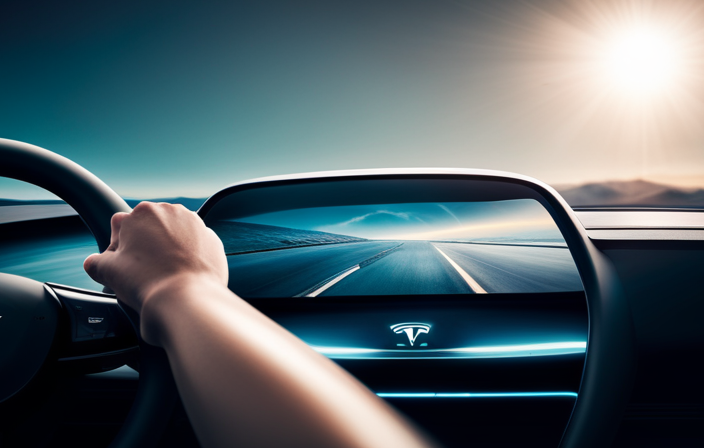
 Cruise FAQs3 days ago
Cruise FAQs3 days agoHow To Set Cruise Control Tesla Model Y
-
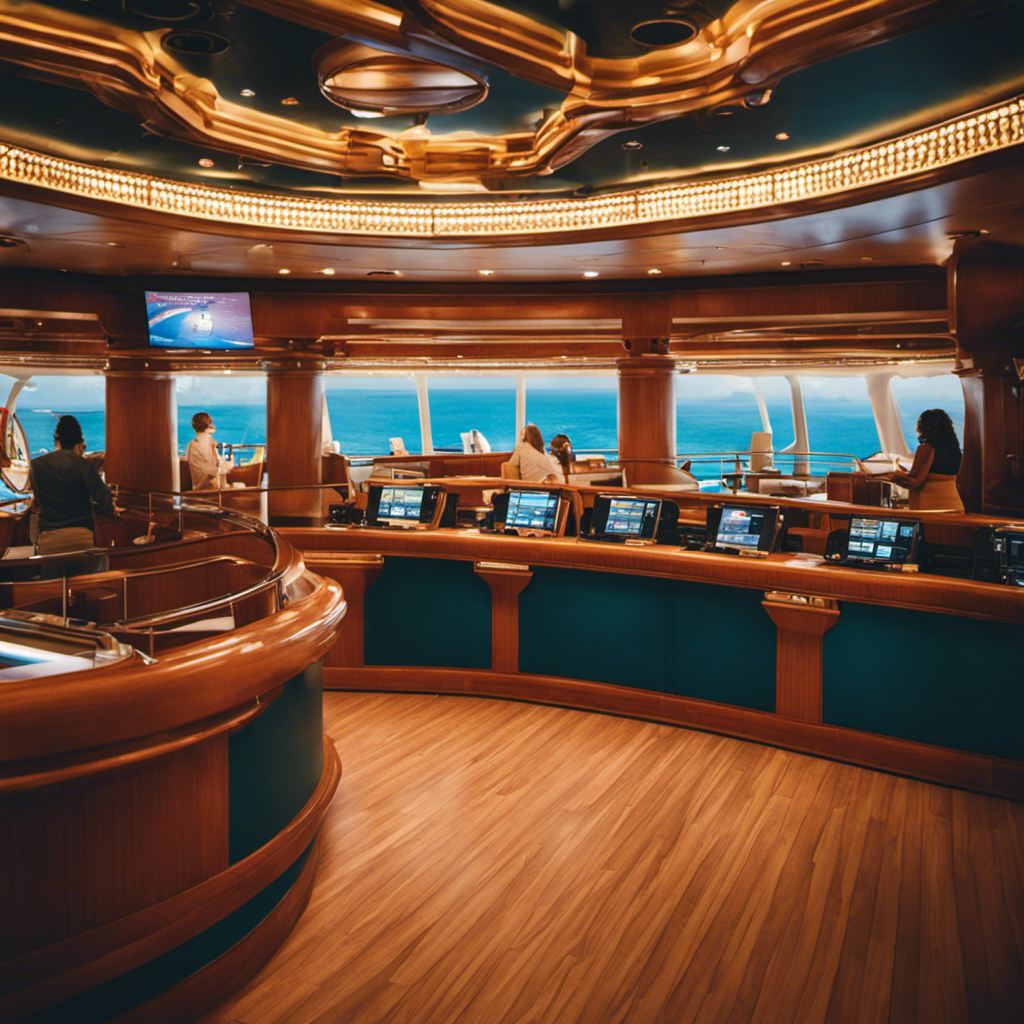
 Cruise FAQs3 months ago
Cruise FAQs3 months agoHow to Contact Someone on a Carnival Cruise Ship
-

 Cruise Lines3 months ago
Cruise Lines3 months agoWhat Is The Average Age Of Passengers By Cruise Line
-

 Onboard Experience1 week ago
Onboard Experience1 week agoFinding Deals On Unsold Cruise Cabins: Tips And Strategies
-

 Cruise Lines3 months ago
Cruise Lines3 months agoDecoding Norwegian Cruise Line’s Gratuities and Service Charges
-
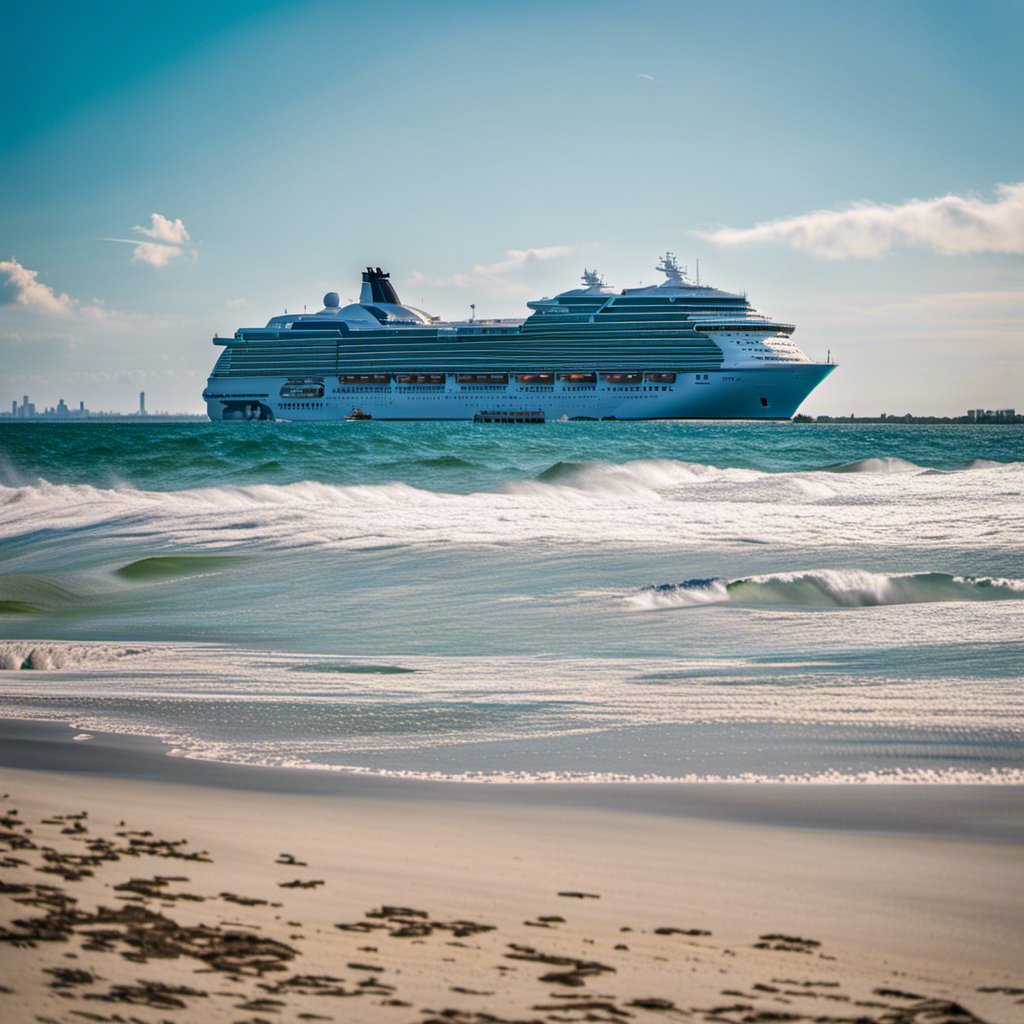
 Cruise Lines3 months ago
Cruise Lines3 months agoWhat Cruise Lines Depart From North Carolina








